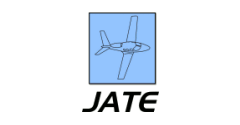Abstract
Many airports with a high value to commercial air traffic have spatial or budgetary constraints which prevent the installation of a precision approach system. We previously designed a low-cost precision approach system which combines the advantages of both ground-based and satellite-based augmentation systems by using a converter between them in order to allow GAST-A approach types. We installed, operated, and flight-tested such a system at Kerkyra Airport using an A320 aircraft. During these, we recorded data from a commercial multimode receiver as well as GPS raw data in order to prove the feasibility of the system. Data were analyzed using the Pegasus toolset as well as a highly precise reference trajectory computed from postprocessed carrier phase data. The data recorded show excellent performance for approach guidance that is no different from that of the more expensive GPS landing system GLS and provides guidance in accordance with the localizer performance with vertical guidance standards. Our low-cost precision approach system can provide precision approach-like guidance to appropriately equipped transport aircraft. Kerkyra Airport is extremely limited in availability of usable surface area, such that conventional precision landing aids cannot be placed on airport property. The system provides the ground-based augmentation system approach service type A, a category defined in Annex 10 to the convention of Chicago. This category has not seen any operational use until now but offers an opportunity to provide precision approaches based on GLS where guidance down to a certain altitude will be sufficient.
Recommended Citation
Dautermann, Thomas and Ludwig, Thomas
(2022)
"Flight Testing GLS Approaches Enabled by Wide Area Corrections in Kerkyra, Greece,"
Journal of Aviation Technology and Engineering:
Vol. 11:
Iss.
2, Article 2.
Available at: https://doi.org/10.7771/2159-6670.1254


